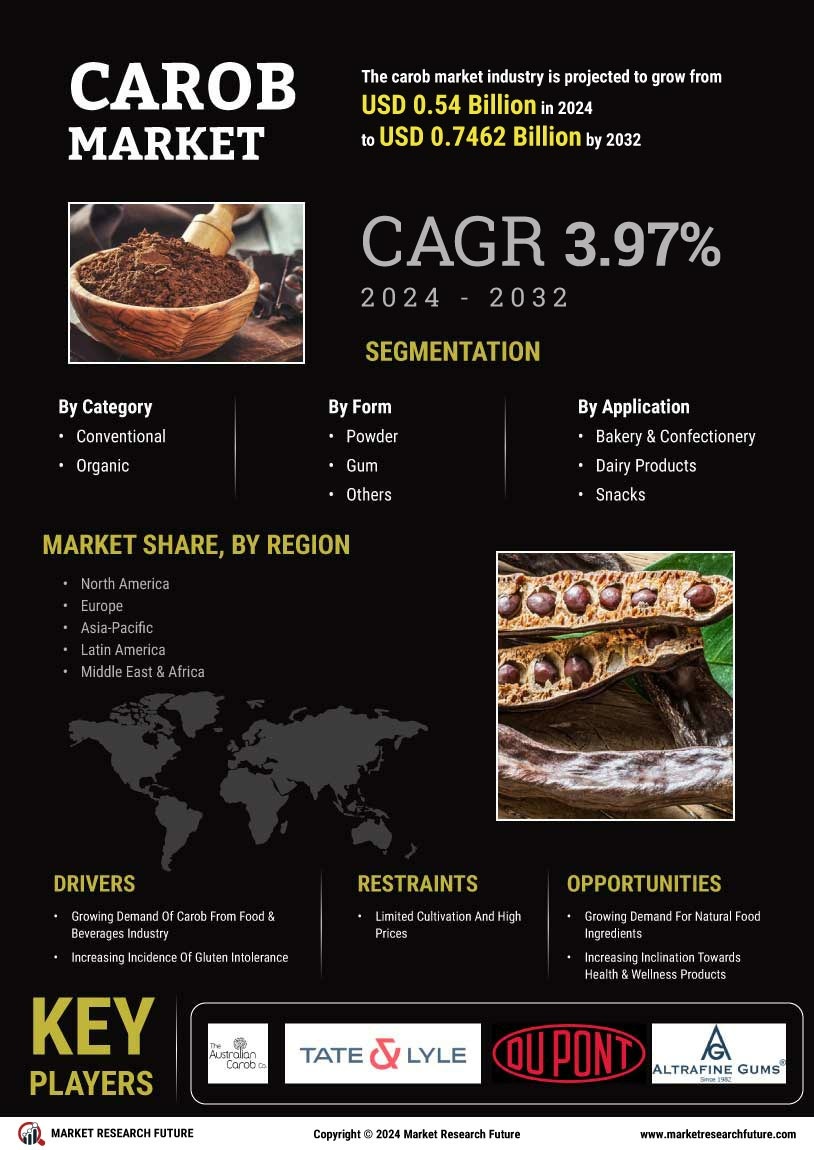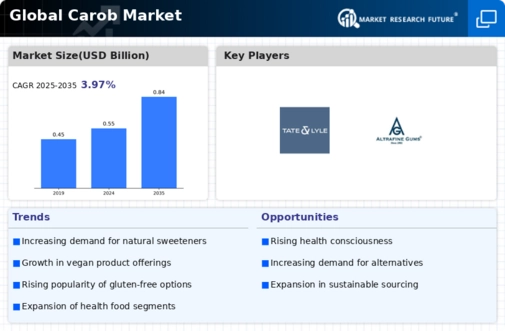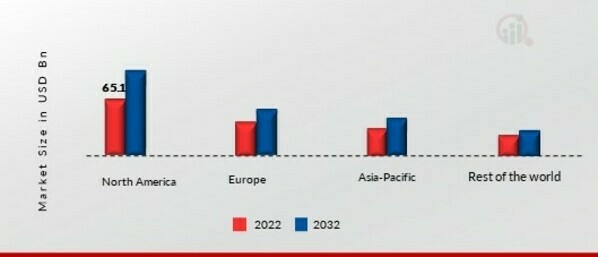Rising Health Consciousness
The Global Global Carob Market Industry is experiencing a surge in demand driven by increasing health consciousness among consumers. Carob is recognized for its nutritional benefits, including being high in fiber and low in fat, which appeals to health-oriented individuals. This trend is particularly evident in regions where consumers are shifting towards natural and organic products. As a result, the market is projected to reach 0.55 USD Billion in 2024, reflecting a growing preference for healthier alternatives to traditional chocolate. The emphasis on clean labels and natural ingredients further supports the expansion of the Global Global Carob Market Industry.
Sustainable Agriculture Practices
Sustainability is becoming a pivotal factor in the Global Global Carob Market Industry, as consumers increasingly favor products sourced from environmentally friendly practices. Carob trees are drought-resistant and require less water compared to other crops, making them an attractive option for sustainable farming. This aligns with global efforts to promote sustainable agriculture, thereby enhancing the market's appeal. The adoption of sustainable practices not only benefits the environment but also meets the rising consumer demand for ethically sourced products. Consequently, this trend is likely to bolster the market's growth trajectory, contributing to its projected value of 0.84 USD Billion by 2035.
Market Trends and Growth Projections
The Global Global Carob Market Industry is poised for growth, with various trends shaping its future. The market is expected to reach 0.55 USD Billion in 2024, driven by health-conscious consumers and the demand for sustainable products. Projections indicate a CAGR of 3.96% from 2025 to 2035, reflecting the increasing adoption of carob in diverse applications. This growth is supported by the rising popularity of natural sweeteners and the expansion of emerging markets. Overall, the Global Global Carob Market Industry appears to be on a positive trajectory, with multiple factors contributing to its anticipated growth.
Diverse Applications in Food Industry
The versatility of carob in various food applications is a significant driver for the Global Global Carob Market Industry. Carob is utilized as a chocolate substitute in confectionery, baked goods, and health foods, catering to a wide range of dietary preferences, including vegan and gluten-free diets. This adaptability allows manufacturers to innovate and create new products, thus expanding market reach. The growing trend of incorporating functional ingredients into food products further enhances carob's appeal. As the food industry continues to evolve, the demand for carob-based products is expected to rise, supporting the market's growth and contributing to a projected CAGR of 3.96% from 2025 to 2035.
Increasing Demand for Natural Sweeteners
The shift towards natural sweeteners is a notable trend influencing the Global Global Carob Market Industry. Carob's naturally sweet flavor profile, combined with its health benefits, positions it as a favorable alternative to refined sugars and artificial sweeteners. This trend is particularly relevant as consumers become more aware of the health implications associated with excessive sugar consumption. The demand for natural sweeteners is expected to drive the market's growth, as more food and beverage manufacturers seek to incorporate carob into their products. This growing preference aligns with the overall trajectory of the market, which is anticipated to reach a value of 0.55 USD Billion in 2024.
Emerging Markets and Export Opportunities
Emerging markets present significant growth opportunities for the Global Global Carob Market Industry. Countries in Asia and Africa are increasingly recognizing the potential of carob as a functional ingredient in various food applications. As these regions develop their agricultural sectors, the export of carob products is likely to expand, providing new avenues for market growth. Additionally, the rising interest in health foods and natural ingredients in these markets could further bolster demand. This trend indicates a promising future for the Global Global Carob Market Industry, with projections suggesting a market value of 0.84 USD Billion by 2035.




